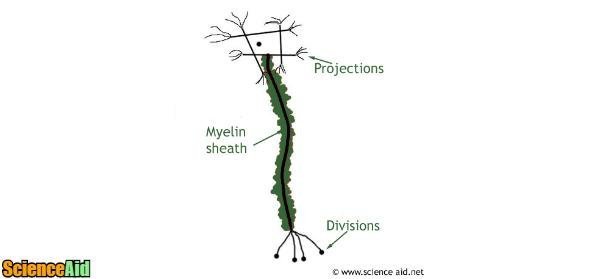Animal Cells: Cell structure, cell transport and specialisation
Edited by Jamie (ScienceAid Editor), Taylor (ScienceAid Editor), Jen Moreau
A Typical Animal Cell
This is a diagram of a simple, animal cell. There are three main components.
- 1This is a layer covering the cell that controls what goes in and out of it. Like a sac holding everything together.Cell membrane.Advertisement
- 2
- 3The liquid that makes up the majority of the cell, it is where chemical reactions take place.Cytoplasm.
Diffusion, Osmosis and Active Transport
- 1Substances will move through the membrane by diffusion. This is the random spreading out of particles until they are even. For example, when you put your instant coffee in boiling water, the coffee particles spread out and fill the entire mug, this is diffusion.Diffusion.
- 2A second way that substances can move through the cell membrane is by osmosis. This is a special type of diffusion where water moves from a high to a low concentration through a 'partially permeable membrane', or a membrane specially shaped to only allow water molecules through. To learn about Osmosis in more detail visit Osmosis.Osmosis.
- 3The final way that substances can be moved through a membrane is active transport. This is where important substances are moved by the membrane. This process requires energy.Active Transport.
Working Together
Now obviously every single cell in your body does not look like the very simple one shown above. Millions of specially adapted cells must all work together to achieve the desired functions An example of one of these specially adapted cells is a nerve cell:
- To begin with, this cell has a myelin sheath. This is a layer of fat containing cells which insulate and therefore speed up the impulse.
- The second feature is the projections and divisions going in and out. This allows it to receive and send impulses to many other cells.
- A final feature of the nerve cell is it's length. This allows it to send impulses long distances.
For more on nerves see Nervous System
Referencing this Article
If you need to reference this article in your work, you can copy-paste the following depending on your required format:
APA (American Psychological Association)
Animal Cells: Cell structure, cell transport and specialisation. (2017). In ScienceAid. Retrieved Apr 25, 2024, from https://scienceaid.net/biology/humans/cells.html
MLA (Modern Language Association) "Animal Cells: Cell structure, cell transport and specialisation." ScienceAid, scienceaid.net/biology/humans/cells.html Accessed 25 Apr 2024.
Chicago / Turabian ScienceAid.net. "Animal Cells: Cell structure, cell transport and specialisation." Accessed Apr 25, 2024. https://scienceaid.net/biology/humans/cells.html.
If you have problems with any of the steps in this article, please ask a question for more help, or post in the comments section below.
Comments
Article Info
Categories : Humans
Recent edits by: Taylor (ScienceAid Editor), Jamie (ScienceAid Editor)










